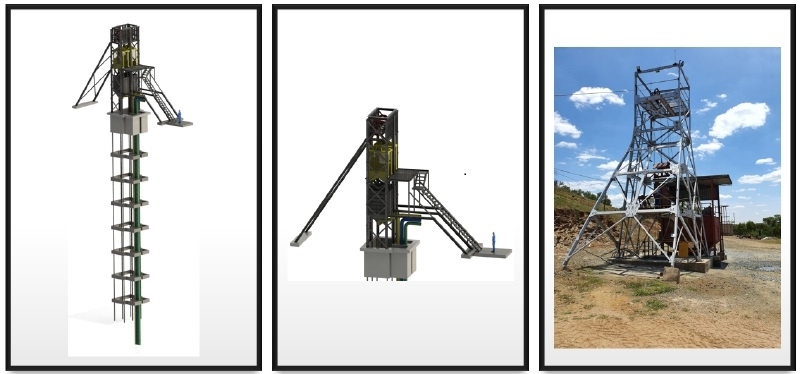Akobo Minerals reports January gold production and details on new vertical mine shaft
21.02.2025Akobo Minerals AB, a Scandinavian-based Ethiopian gold producer, provides an operational update for January 2025 and details on the new vertical mine shaft with a 100 t/d capacity.
- Gold production: Slightly more than 2 kg of doré gold bar was produced in January, bringing total gold production to 17 kg to date. This was in line with expectations, as tunnel operations were temporarily halted from mid-December 2024 to mid-January 2025 for essential safety improvements. Both tunnels are now fully operational.
- Increased production ahead: Stoping (mining the ore body) has commenced from the Western Winze, while the Eastern Winze is nearing completion for its prospect drive to start at the new 575 level. Going forward, mainly ore will be mined, marking a shift toward more stable production. It is important to highlight that underground mining in a deposit like Segele, which exhibits a strong nugget effect, naturally results in month-to-month production variations. While short-term fluctuations can occur, long-term production expectations remain unchanged.
- All-time high gold price: The recent record gold price is expected to positively impact future cash flow from the Segele mine.
Establishment of a vertical shaft at Segele
Due to the compact and highly concentrated nature of the orebody, Akobo Minerals has decided to establish a vertical shaft to improve access and increase underground hoisting capacity. This infrastructure upgrade will significantly accelerate production, aligning it more closely with the processing plant’s capacity. Additionally, the vertical shaft will enable activation of the Carbon-in-Leach (CIL) circuit, increasing gold recovery rates from approximately 60 % to 93 %.
Key features of the vertical shaft:
Phase 1: Initial shaft depth of 60 m, with infrastructure capable of extending to 120 m
Timeline: Expected completion within 12 to 16 weeks from commencement
Design: Approximately 3 m in diameter, accommodating cages, ventilation, water pumping, and electrical infrastructure
Hoisting system:
- Double-cage arrangement for personnel and ore transport
- Hoisting capacity of approximately 3 t per hoist, with a total capacity of up to 100 t/d, depending on underground ore availability
- Electrically powered winder, backed by a dedicated diesel generator with redundancy from the process plant’s power system
Manufacturing and installation: Headgear, control, and winch rooms will be manufactured in South Africa and shipped to Segele for assembly and commissioning
The transition to a vertical shaft represents a shift aimed at improving long-term production efficiency.

